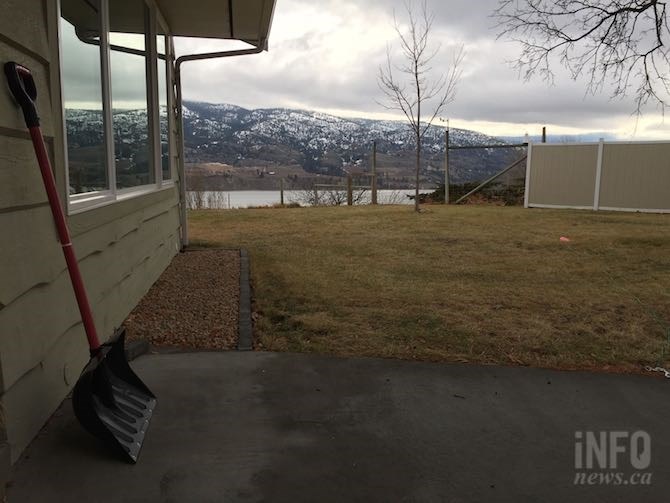
Winter statistics for Kamloops and the Okanagan reveal a warmer and for the most part drier winter than normal despite of a cold February.
(STEVE ARSTAD / iNFOnews.ca)
March 01, 2021 - 2:55 PM
Winter is over, from a meteorological stand point, and statistics show what Kamloops and the Okanagan residents already know - overall, we had a mild and dry winter.
Environment Canada meteorologist Doug Lundquist says the month of February was “really cold,” but the month’s weather failed to make up for a December and January that was warmer and drier than normal.
Kamloops finished the month 2.1 degrees below normal, with 13 millimetres of precipitation compared to a February norm of 12 mm. Vernon was 1.1 degrees cooler than normal, with 16 mm of precipitation compared to a February norm of 31 mm. Kelowna was cooler by 1.8 degrees and also received roughly half of the city’s normal February precipitation at 11 mm, compared to the 19 mm it normally receives. Penticton was 1.6 degrees colder than normal and received 23 mm of precipitation, up from February norm of 20 mm.
With winter over yesterday and spring beginning today, from a meteorological standpoint, Lundquist says February’s cold wasn’t enough to push our winter to ‘cold.’
Meteorologists and climatologists track the seasons precisely every three months — as opposed to the Georgian calendar's use of astronomical seasons (the position of the sun), or the lunar calendar's use of moon phases — to mark seasons so spring always begins on March 1, according to Environment Canada. The fixed lengths let scientists calculate seasonal statistics. In the northern hemisphere, the astronomical start to Spring begins on the March equinox when the sun crosses the equator. This year it's on March 20.
Lundquist says Kamloops, Vernon, Kelowna and Penticton were all warmer than average this winter.
Kamloops was 1.4 degrees above normal (-0.4 C compared to -1.8 C). Precipitation was nearly normal, at 58 mm compared to an average of 60 mm for the winter months.
Vernon was warmer by one degree (-1.7 C compared to -2.7 C) and had 90 per cent of its normal winter precipitation at 102 mm compared to the average of 113 mm.
Kelowna was warmer by 1.5 degrees at -0.5 C compared to a normal winter of -1.9 C. The city also saw 62 mm of precipitation compared to an average 80 mm.
Penticton was 0.6 degrees above average at 0.4 C, compared to the usual winter norm of -0.2 C. The city also saw 75 mm of precipitation compared to the usual 76 mm that normally falls in winter.
It looks like March is going to come in like a lamb with warmer than normal temperatures of between 9 C and 15 C, and mostly clear skies today through Thursday. We'll have to see if March goes out like a lion as weather folklore states.
The normal daily high and low for early March in Kamloops is 8 C and -3 C, and 6 C and -3 C in Kelowna, Vernon and Penticton.
To contact a reporter for this story, email Steve Arstad or call 250-488-3065 or email the editor. You can also submit photos, videos or news tips to tips@infonews.ca and be entered to win a monthly prize draw.
We welcome your comments and opinions on our stories but play nice. We won't censor or delete comments unless they contain off-topic statements or links, unnecessary vulgarity, false facts, spam or obviously fake profiles. If you have any concerns about what you see in comments, email the editor in the link above.
News from © iNFOnews, 2021